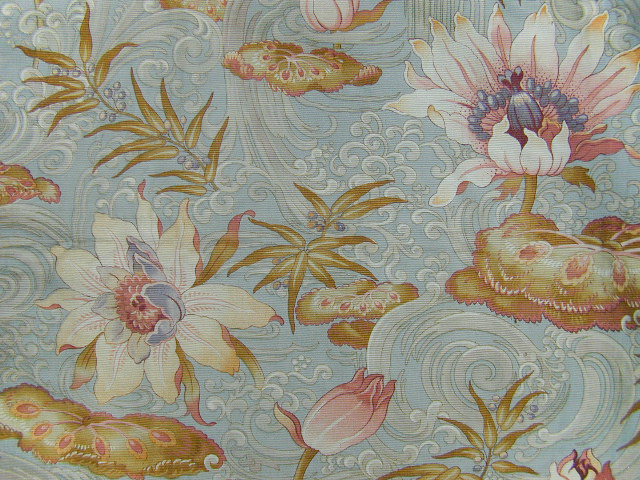Sometimes a textile design presents a motif that is not often seen as shown below. These fabrics are traditional in color and overall design, but the motifs are unsual.
The first example is from the mid-19th century and presents oak leaf clusters and acorns. Although oak tress are common in France, the use of oak motifs in textiles is rare. The second fabric, from the 1930s, uses the seldom-seen pine cone motif.
Next, on a white background, is a butterfly bush or buddleia. The motif even includes some butterflies!
The second one below, a 1920s fabric with a pale yellow background, features wisteria (in French it is glycine. ) This vine is grown all across the south of France, but is a rarely use as a textile motif.
The last two pieces are both early 19th century and both feature feather motifs rather than floral. The first depicts stylized peacock feathers and the second features exotic ostrich plumes.


























